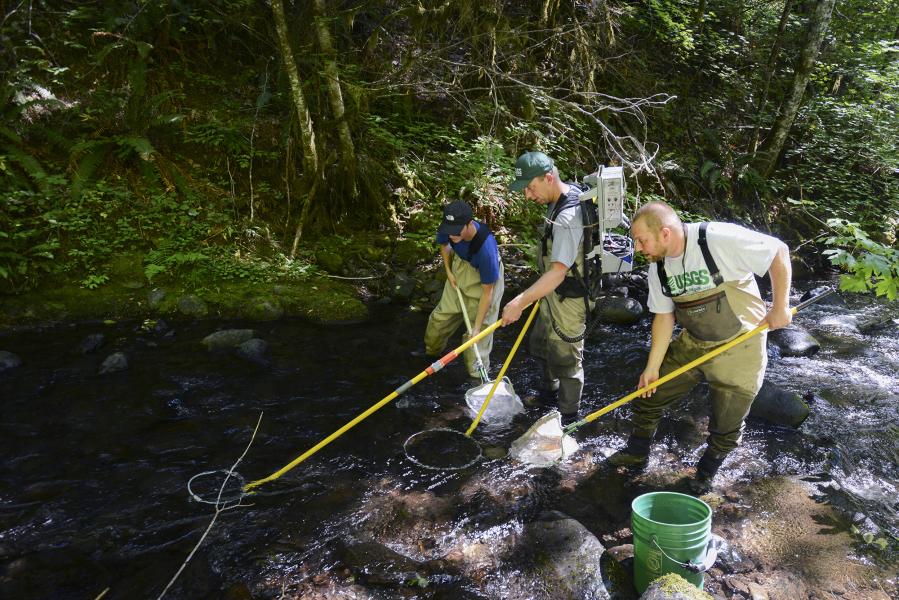BUCK CREEK — At the bottom of a compact, lush gorge, a handful of researchers with the U.S. Geological Survey waved electronic wands through the waters of Buck Creek, a tributary of the White Salmon River, and netted as many juvenile fish as they could find.
The work is part of a larger study of juvenile fish production in the White Salmon River since the removal of Condit Dam in 2011.
“The Condit Dam removal was a $37 million project. To make a small investment to figure out what’s coming back is the common-sense thing to do,” said Margaret Neuman, executive director of the Mid-Columbia Fisheries Enhancement Group.
The study is the first of its kind and supported by a grant from the Washington State Salmon Recovery Funding Board. Unlike the Elwah Dam removal on the Olympic Peninsula, there wasn’t funding set aside to address fish monitoring after the Condit Dam was removed, Neuman said.
By studying what fish are returning to the White Salmon and a few of its tributaries, scientists hope to learn what species are recolonizing the river; where they’re coming from; how many juveniles are being produced; and the timing and survival of out-migrating, ocean-bound juveniles.
“We’re collecting information to inform the management and inform the tribes about if there’s ever going to be potential for harvest here; do we have actual self-sustaining populations … or do we have a population that’s supported by strays?” said Ian Jezorek, a fishery biologist with the U.S. Geological Survey. “What do we actually have going on here and what do we want? Those are questions outside the purview of USGS. That’s up to the fisheries managers.”
After the dam was taken out, fish were allowed to return to the White Salmon without human intervention.
“Natural fish restoration isn’t always done. Sometimes fish are stocked or there are breeding programs put into place,” Jezorek said.
The scientists isolated sections of a handful of White Salmon tributaries and trapped juvenile fish. The scientists weighed, measured and tagged each fish — none more than just a few inches long — before releasing them back to the creek and starting the process again a little further upstream.
Microchipping the larger fish and fin-clipping the smaller fish will allow for future tracking and observations.
Buck Creek is serving as kind of a nursery for recently hatched fish until they’re large enough to go out into the Columbia mainstem. By studying the number of young fish in the waterway, scientists can extrapolate how many adult salmon and steelhead are coming to the White Salmon.
Several of the species — including lower Columbia chinook salmon, lower Columbia coho salmon, Columbia River chum salmon, mid-Columbia steelhead, and bull trout — being studied are listed as threatened under the Endangered Species Act.
Earlier this year USGS scientists used a rotary screw trap on the lower White Salmon River to learn about juvenile fish.
The study will complement work done by USGS scientists before the dam removal that examined fish populations in the While Salmon River and its tributaries above Condit Dam. The new data will enable scientists to compare changes in fish populations, which they expect to be positive.
“It is through these kinds of studies that we can assess if the expensive dam removal action results in meeting the expectation,” said Pat Connolly, lead research fishery biologist, in a news release.




